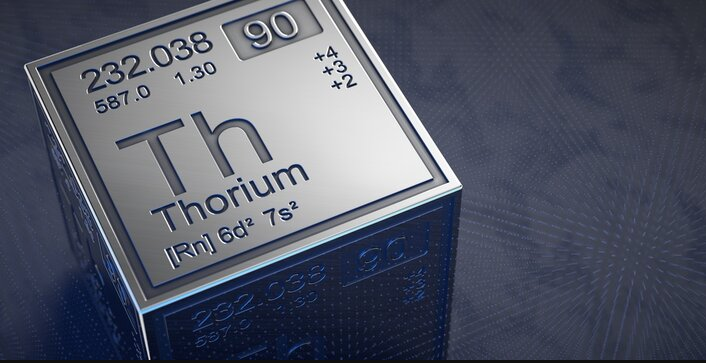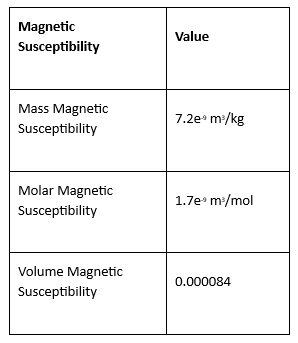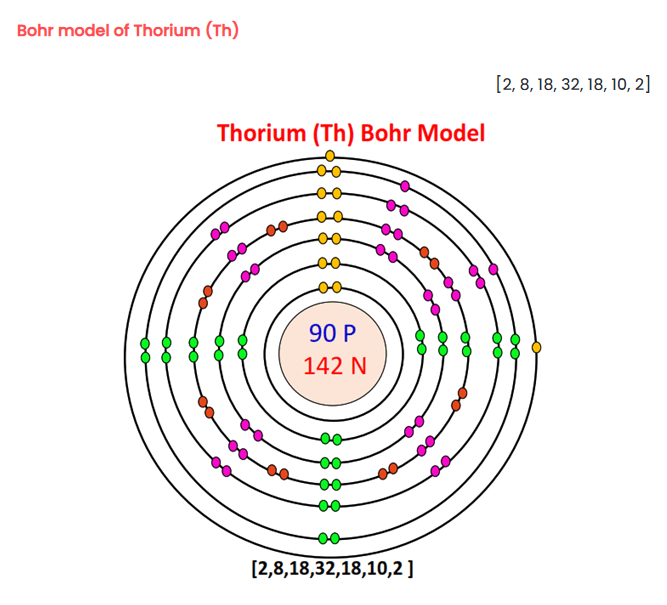The wonders of thorium
What is it about thorium that is significant?

Thorium is a very electropositive and radioactive metal. It is reactive with halogens, oxygen, hydrogen, and sulphur.
https://techiescience.com/thorium-properties/
Thorium can be categorized under some chemical categories in the list below.
- Thorium powder has pyrophoric properties. (It ignites spontaneously)
- Thorium is a highly ductile, and fairly soft element.
- Thorium is a crucial alloying component of magnesium because it increases the metal’s strength and creeps resistance at high temperatures.
- Thorium dioxide was once added to glass to raise the refractive index, generating thoriated glass for use in premium camera lenses.
- Thoriated tungsten, or Thorium, may be used to make electrodes and filaments for incandescent lights.
It is considered to be paramagnetic for materials whose electrons are hindered in magnetic fields. Let us examine the paramagnetic characteristics of thorium.
The paramagnetic properties of thorium are caused by the fact that it has two unpaired electrons. The Th has a magnetic moment of 2.83 (spin-only value). The table below displays the magnetic susceptibility value for thorium:

Magnetic properties of thorium and uranium
The dependence of the magnetic susceptibility on the temperature in the compound UB4 and system U1−xThxB4 has been studied in the temperature range 140–1300°K. It has been established that the paramagnetic susceptibility does not obey the Curie-Weiss law. The experimental results are interpreted on the basis of the Stoner model of collectivized electrons which also makes it possible to explain the magnetic properties of other borides of thorium and uranium.
Why thorium?
Conventional scientific efforts are to use thorium as an energy source to replace radioactive uranium.
What does thorium present potential for? It has a unique magnetic value. As an element in a molecular composite, it provides a positive charge to a particular structure. This could be useful in building a vehicle for space flight.
Thorium having pyrophoric properties makes thorium a volatile substance. It’s use for energy storage make it valuable.
In studying every element’s potential, its molecular composition has to be investigated. Studying the Bohr model helps to analyze an element’s properties.
Thorium 3D model: https://graphoverflow.com/graphs/3d-periodic-table.html
Another Bohr model diagram: https://topblogtenz.com/bohr-model-for-each-element/

Thorium presents questions. In the study of Victor Grebennikov’s gravity platform, its design consists of CSEs (Cavity Structures Effect). This is a negative action. Earth’s atmosphere, in Grebennikov’s gravity platform is the attractive force. Would a underneath lining on the outer layer of the gravity platform act to neutralizing the platform, or would it react to Earth’s positive atmosphere to cause a repelling action beneath the gravity platform?
In a different configuration for a space flight vehicle, there is an absence of atmospheric charge; other than the influence of large planetary bodies. I could be possible to design a configuration where thorium acts as a catalyst to amplify a positive charge.
Either that or a thorium might be able to replace lithium, or other as a battery’s energy storage.
When asking the question: How a battery works, here is the answer:
Batteries use a variety of materials to store energy, including:
- Anode: A negatively charged electrode made of materials like zinc, lithium, or graphite.
- Cathode: A positively charged electrode made of materials like manganese, cobalt, or nickel.
- Electrolyte: A chemical paste or liquid that separates the anode and cathode and facilitates the flow of electrical charge.
- Separator: A thin layer of material that prevents the anode and cathode from touching and causing a short circuit.
- Casing: The outer casing of the battery, often made of steel or plastic.
How Batteries Work
Batteries work by converting chemical energy into electrical energy through a process called electrochemical reactions. Here’s a simplified explanation:
- Discharge: When a battery is connected to a device, the chemical energy stored in the battery is released.
- Electrochemical Reactions: The anode and cathode react with the electrolyte to produce an electric current.
- Electrons Flow: Electrons flow from the anode to the cathode through the external circuit, creating an electric current.
- Chemical Energy Released: The chemical energy stored in the battery is released as electrical energy.
- Recharge: When a rechargeable battery is recharged, the process is reversed, and the chemical energy is restored.
Example: Lithium-Ion Batteries
Lithium-ion batteries, commonly used in electric vehicles and mobile devices, use a lithium cobalt oxide cathode and a graphite anode. The electrolyte is a lithium salt dissolved in an organic solvent. When the battery is discharged, lithium ions move from the cathode to the anode, releasing electrons that flow through the external circuit. When the battery is recharged, the process is reversed, and lithium ions move back to the cathode, restoring the chemical energy.
Is it possible for thorium to be used as a cathode? Would its pyrophoric properties in a composite be suitable for battery storage? Or are all actinides unsuitable for energy storage?
One of the efforts in transportation, is to use a thorium supply in an ion laser induced fusion for an engine.
No refueling or recharging: just do this with thorium (you won’t believe it)
Laser-Based technology is the prime motto of the thorium power engine. Thorium is anostradic chemical which can be applied to maerootically drive laser beams. While a thorium bomb in an auto engine receives high energy electrons from a channeler, it emits energy.
The laser light is focused into a chamber where nitrogen and hydrogen gas exist which results in plasma reaction that leads to a heated channel. This heat turns a extremely powerful engine, which in convert heat energy to mechanical motion that power of car wheels and its drivetrain.
It does not use air, fuel, and spark plugs as their methods of operation. Thorium is a material with the half-life between 5-10 years, so instead of the regular refueling it is used the full-time. Therefore, thorium cars are unique with the longest range and efficiency among existing cars.
Imagine how mobility could change thanks to the first thorium-engine, which has an extremely higher potential than hydrogen and EVs combined. In fact, carmakers have considered the possibility of producing it without nuclear reactions, which is the only drawback we could find to this proposal (no one would want to drive with a radioactive power plant under the engine).
This article talks about a new form of engine using thorium. It’s an overview of using laser-based technology as a method of using thorium ions to create heat which is used to convert it into mechanical motion. This mechanical motion can be engineered to provide power to a vehicle’s drivetrain. Since there isn’t a clear definition to the phrase ‘anostradic chemical’; the meaning of the word ‘ano’ is from new Latin, from Greek anō is upward, above, from ana up. The closest description of the word stradic is stratum, a plural of stratus from Latin; meaning: spread, or bed.
The need for innovative transportation is with efficient energy use. Thorium 232 is highly radio-active. Efficient transportation has to follow the Victor Schauberger philosophy: understand and copy nature. Chemical explosions for propulsion are inefficient energy use. The centrifugal force pushes outward, this action causes resistance and heat buildup. This produces massive energy loss.
How can thorium be used to increase magnetic spin efficiency? Can thorium be used in an alloy with Niobium or Neodymium? Possibly.



